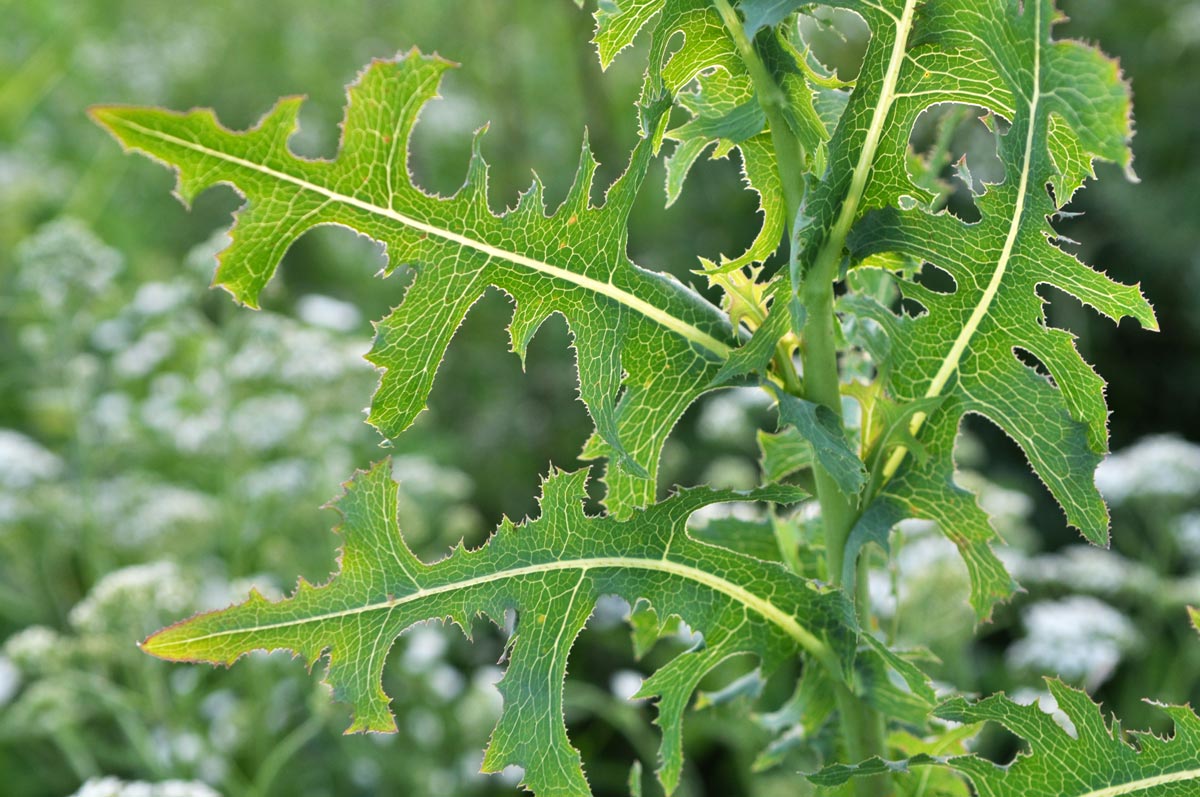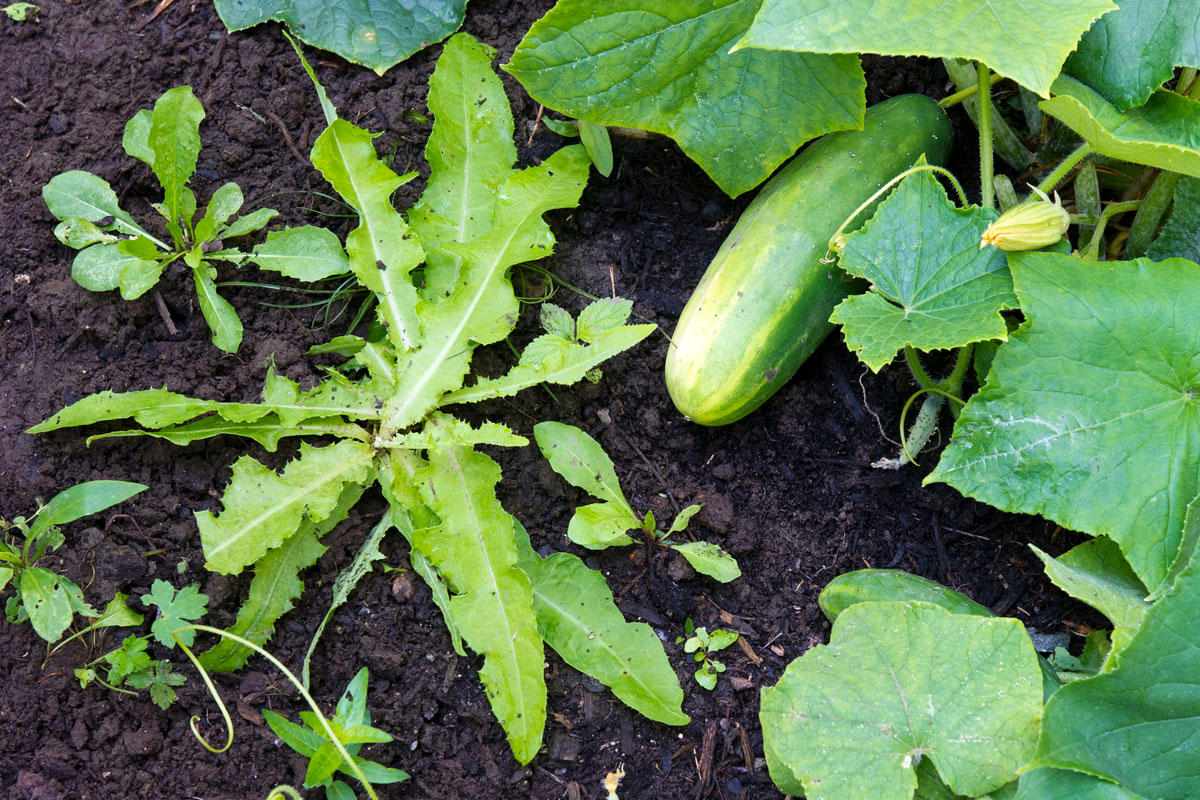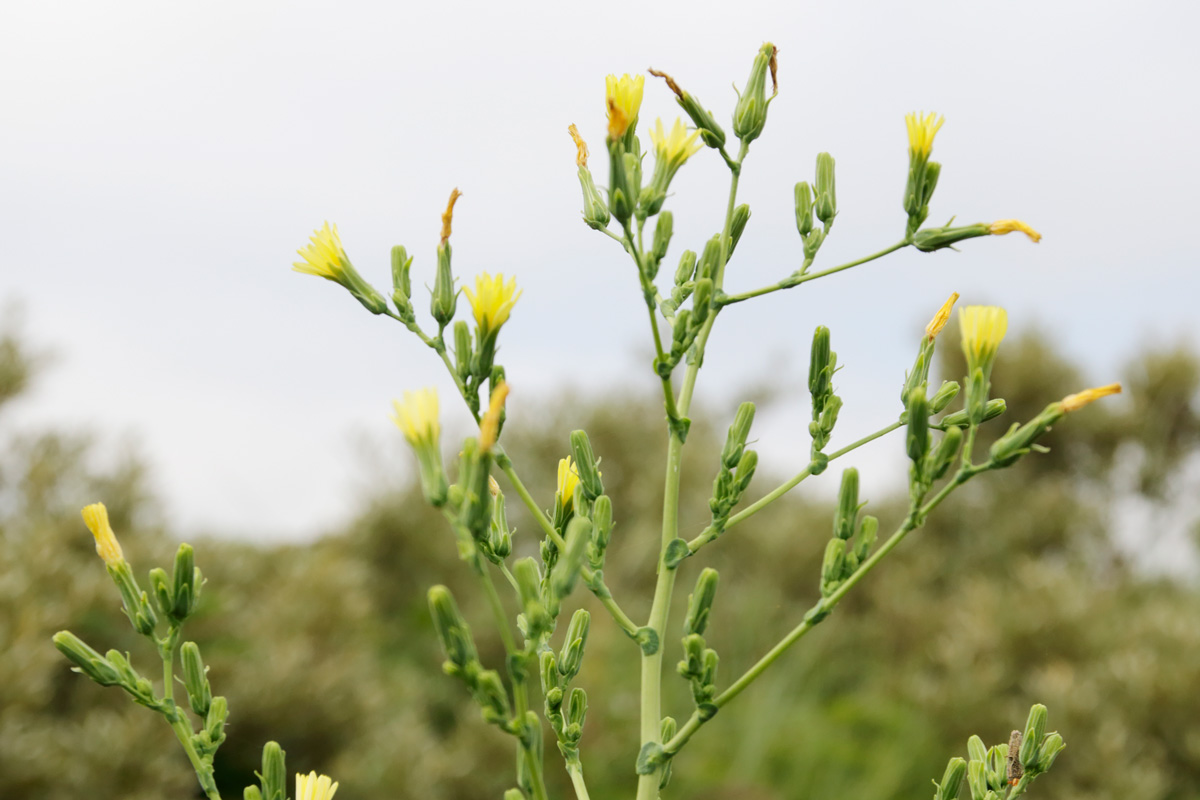How to Get Rid of the Toughest of Weeds
Weeds have developed traits that make then top-notch survivors, allowing them to colonize and choke out weaker competitors. Learn how to beat the worst weeds.
A plant that spawned our No. 1 salad ingredient is now a common garden weed.
Prickly lettuce – sometimes called “wild lettuce” – is a wild ancestor of the many cultivated lettuces that gardeners grow and that grocery stores sell.
Hailing from western Asia and the Mediterranean region, it’s a plant with a far more bitter flavor than our modern salad lettuces. The prickles along the plant’s leaf margin and along the middle of the leaf undersides also make it less appealing in a salad bowl.
Prickly lettuce is versatile enough and seeds well enough that it has spread well beyond its native borders. It’s become a common weed throughout most of the continental U.S., often showing up in farm fields, along roadsides, and in landscape beds and home vegetable gardens.
Although this weed is most common in dry, sunny areas, it can also grow in damper areas and in most any soil from sand to clay. The plant’s deep taproot helps make it a drought-tough performer.
One of the few sites prickly lettuce doesn’t like is a shady one.

Prickly lettuce plants produce small, pale-yellow, daisy-like flowers in late summer. Ramdan Fatoni / iStock / Getty Images Plus.
Prickly lettuce (Lactuca serriola) is an aster-family plant that functions as both an annual (completes its whole life cycle in one season) and a biennial (grows foliage one year, then flowers, seeds, and dies in the second).
Most prickly lettuce seedlings sprout in fall and overwinter as a rosette of low leaves. However, seeds also can sprout in early spring.
Over-wintering plants begin to send up central flowering stalks in May. Spring-sprouted ones soon follow.
Plants produce small, pale-yellow, daisy-like flowers toward the tops of the branched-out stalks from July to September. Seeds mature and drop from late summer into early fall.
The leaves of prickly lettuce are bluish-green and arranged alternately on the stems. They vary in length from two inches to a foot with the bigger leaves toward the base and the smaller ones toward the top.

Prickly lettuce leaves are deeply lobed with prickles along the leaf margins. Orest Lyzhechka / iStock / Getty Images Plus
One distinguishing feature of prickly lettuce is that its leaves are distinctly lobed, and those lobes come to a point. The prickles along the leaf margins are another clue.
A third way to nail down an ID of prickly lettuce is that its leaves and stems emit a milky sap when they’re cut or broken.
Plants can grow up to five feet tall, although heights of two to three feet are more common. The stems are woody and hollow.
As the flowers mature in late summer, dandelion-like puffy seedheads form that help carry the seed on the wind. Most seeds fall fairly close to the parent plant.
The flower petals often turn blue as they dry.
After flowering and seeding, plants die at season’s end.

Young prickly lettuce seedlings can be removed by hand, but make sure to get the whole tap root.
Hoeing and pulling effectively eliminate plants – so long as you remove the whole taproot. Plants that are partially removed or cut off are capable of resprouting. In a lawn, prickly lettuce usually gives up after several mowings.
Young prickly lettuce plants also can be killed with spot-sprays of several kinds of liquid herbicides. Check product labels to be sure prickly lettuce is listed under “weeds controlled,” and be careful not to allow spray to drift onto desirable plants. Follow all other label instructions as well.

Remove prickly lettuce plants before they have a chance to flower and set seed. Mantonature / iStock/ Getty Images Plus
As with all weeds that spread by seeds, the most important job is to kill or remove prickly lettuce plants before they’ve had a chance to flower and set new seed. Even a few prickly lettuce plants can build up the supply for next year’s outbreak.
An average prickly-lettuce plant produces 4,000 to 6,000 seeds per year, but a well branched five-footer can produce many more – up to an estimated 50,000 seeds per year.
Seeds have no dormancy requirements and can germinate soon after dropping. The good news, though, is that most of them don’t sprout or survive – plus seeds don’t live long when dormant in the soil (three years or less).
Prickly lettuce seeds also are vulnerable to granular weed-preventers such as Preen Extended Control Weed Preventer.
Preen Extended Control is labeled for the control of prickly lettuce in landscape beds, where it can be applied after planting annual flowers or over top of some 600 species of existing landscape plants. The label lists plant-by-plant specifics. For best results, lightly water after scattering the granules.
Preen Extended Control stays active for up to six months and gives season-long protection with two applications per year – once in early spring and once in early fall.
Preen Mulch with Extended Control Weed Preventer is a two-action bagged product that combines wood mulch with a weed preventer.
Another line of defense is covering bare ground either with mulch or with groundcover or other dense plantings of your choice. Without exposed soil, prickly lettuce seeds have no space to germinate and no light to aid germination.